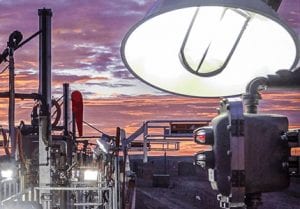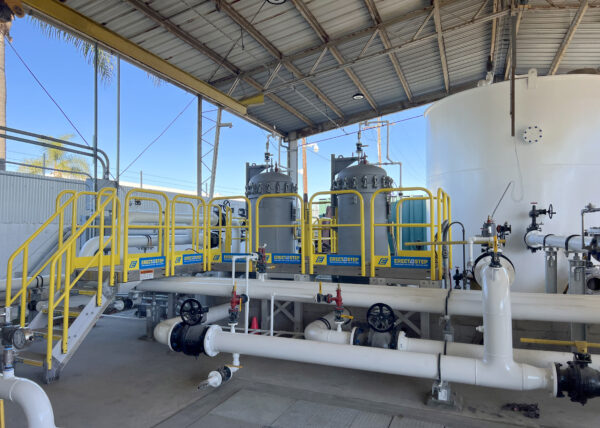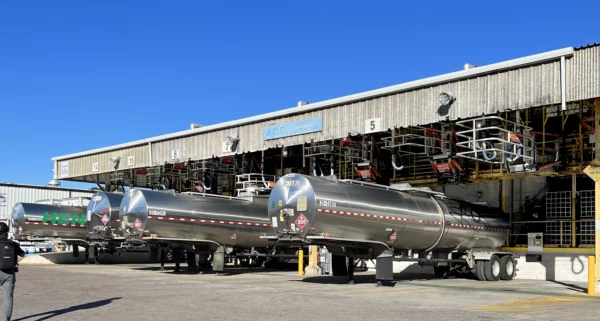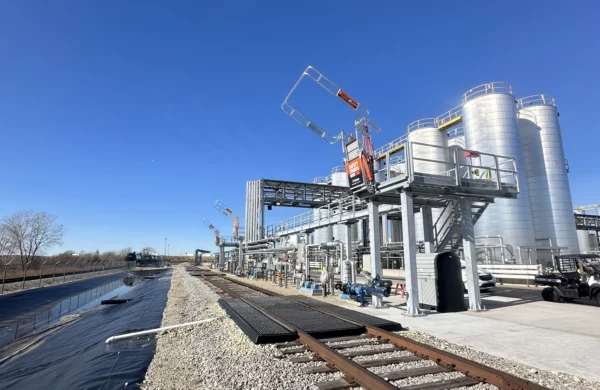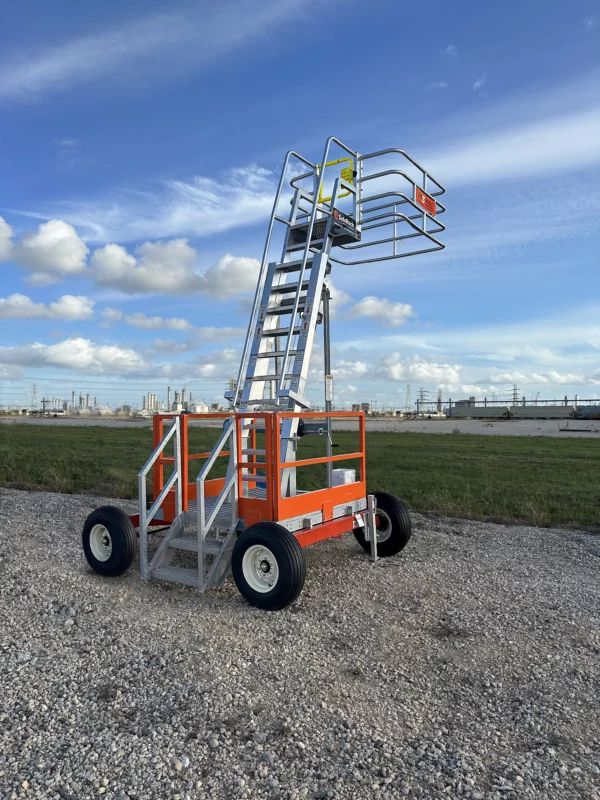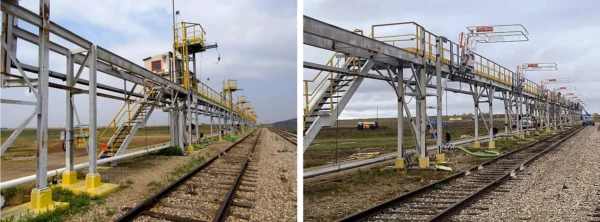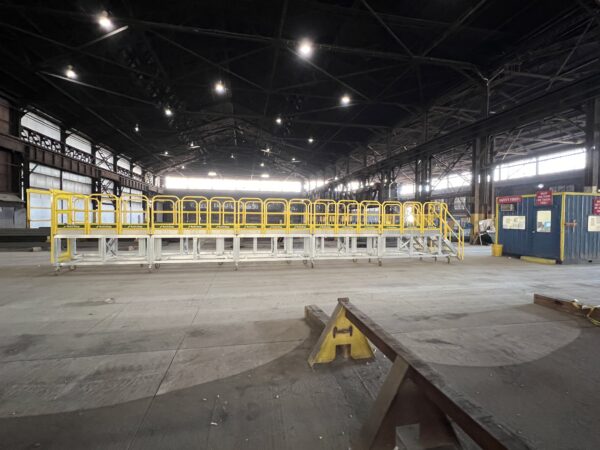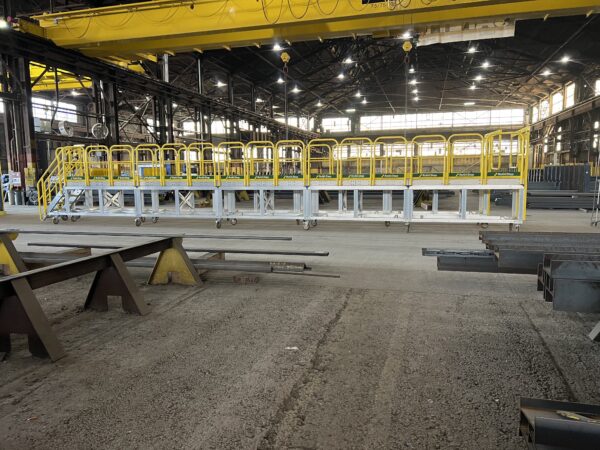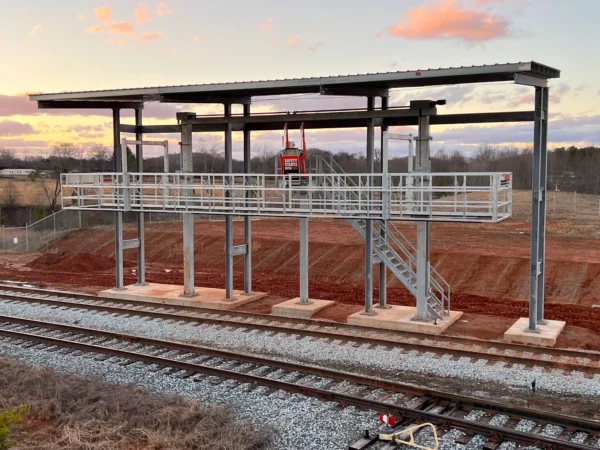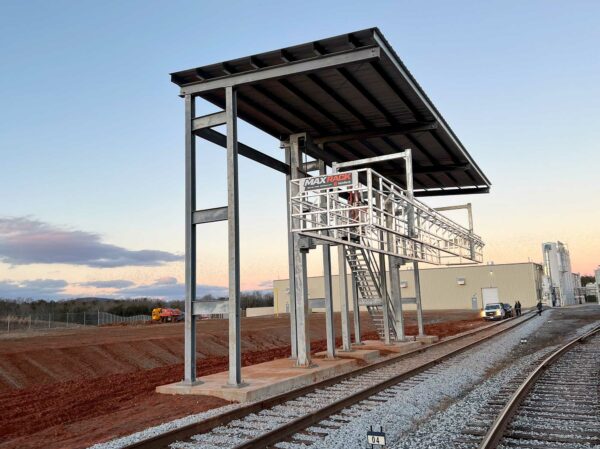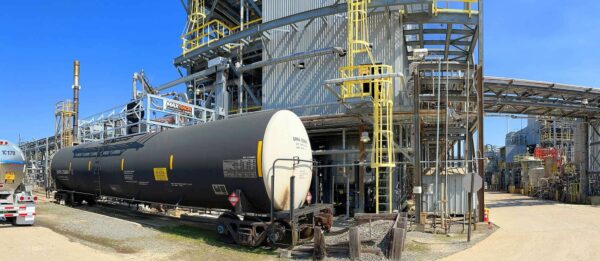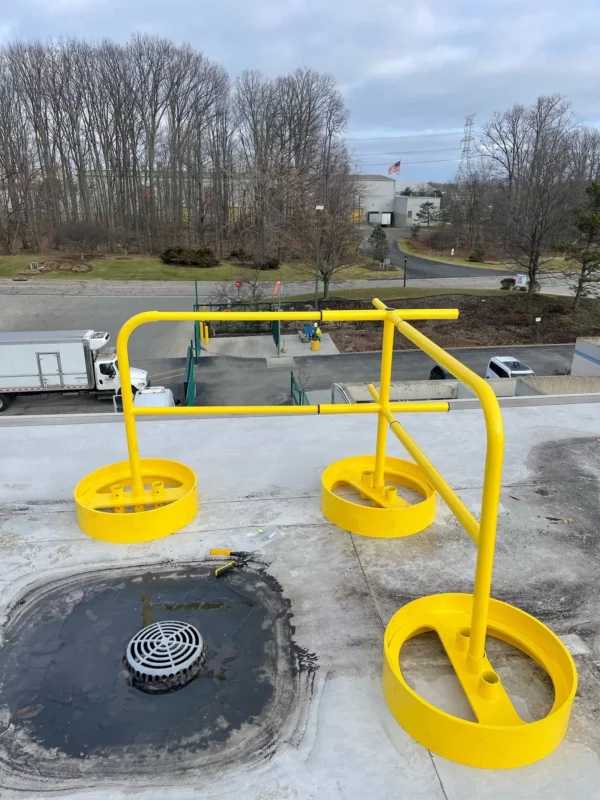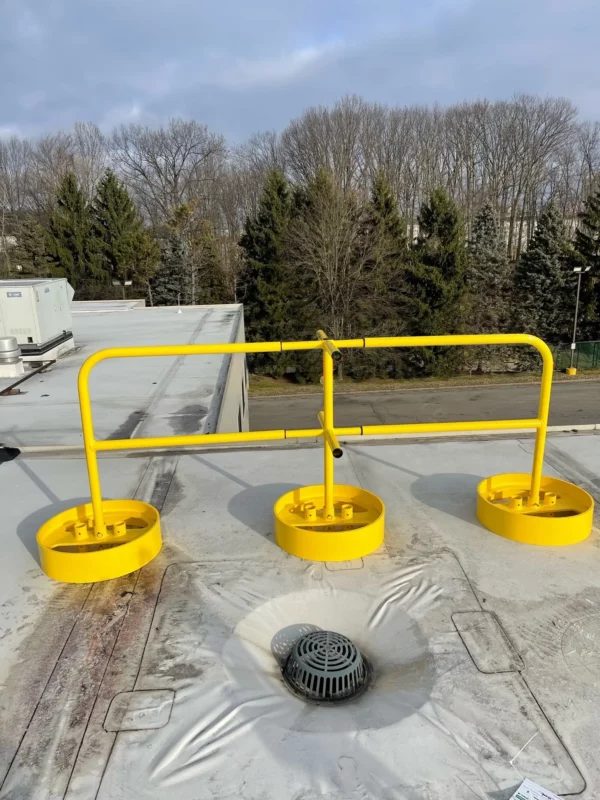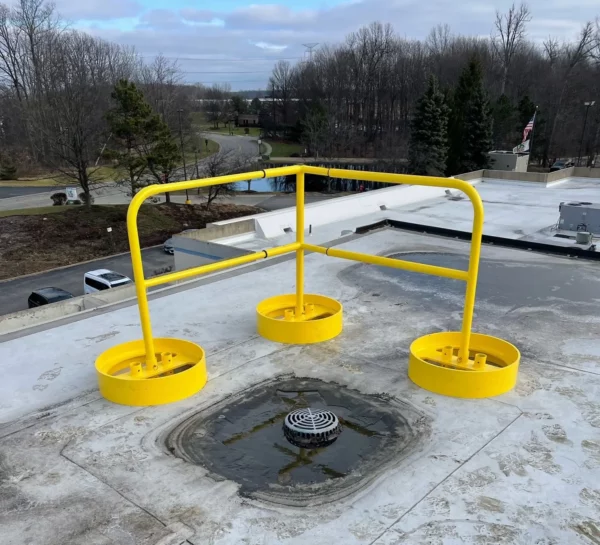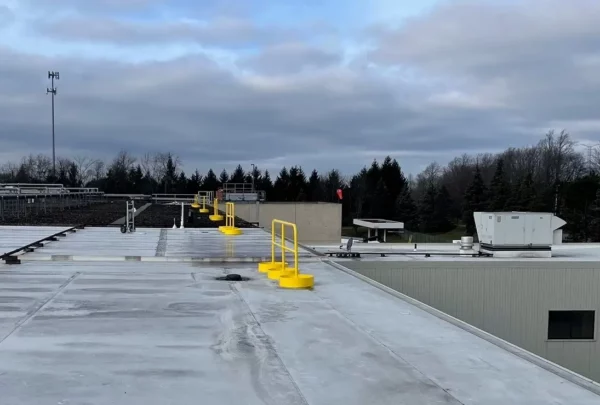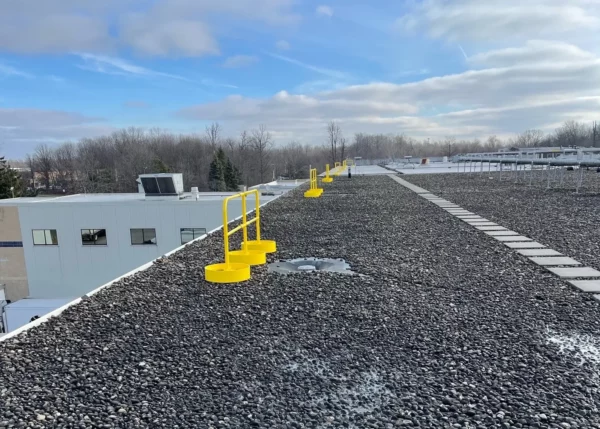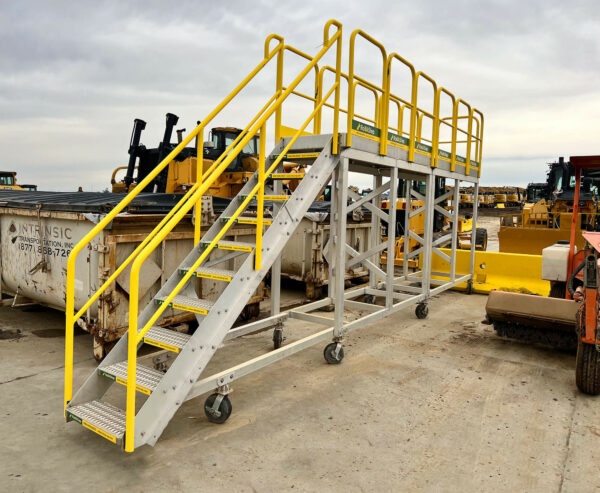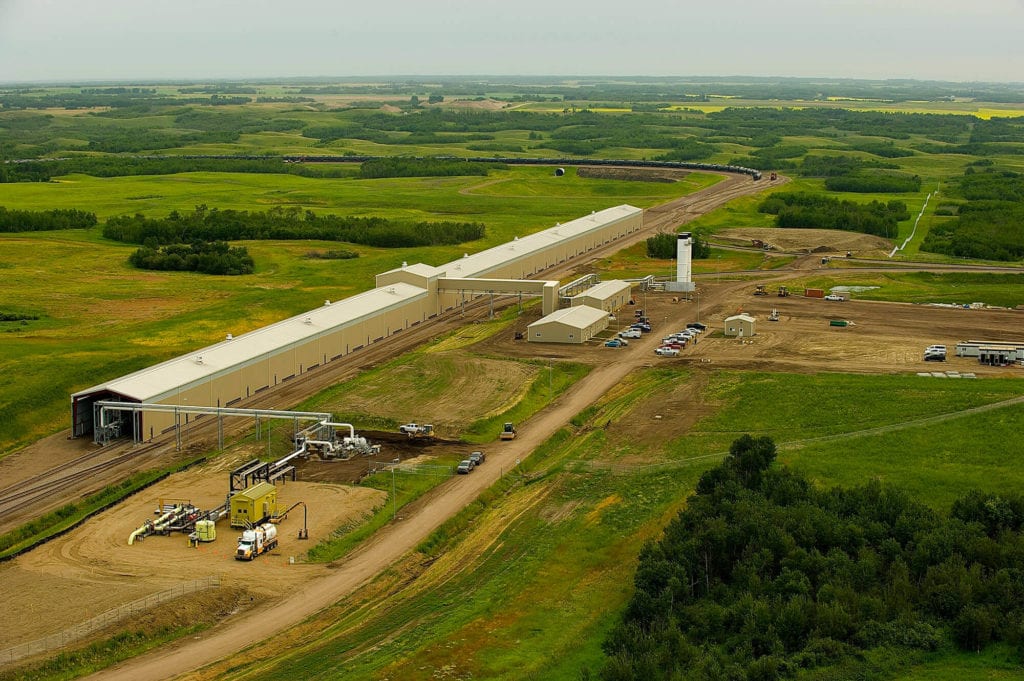Get a quote, configure a custom safety solution or ask a question. We're here to help!








- Spill ContainmentMore …Loading Safety CagesMore …
SafeRack Worldwide
We pride ourselves on one-on-one customer service. When you call SafeRack, we'll be there to answer your questions with a combined experience of 400+ years.
Select your region below.- View Products
- Railcar & Truck Loading Platforms
- Gangways & Loading Ramps
- Stairs, Platforms & Ladders
- Mobile Ladders & Platforms
- Loading Arms & Fluid Transfer
- Safety Gates & Traffic Control
- Aviation & Aerospace Access
- Marine Access & Loading
- Grounding & Monitoring
- Spill Containment
- Loading Safety Cages
- Transloaders & Skids
- Shelters & Canopies
- Fall Protection
- Terminal & Speciality
Home / Industries / Bulk Chemical Loading / Liquid OxygenLiquid Oxygen Handling Design, Loading, and Installation.
Although no two Liquid Oxygen loading solutions will be identical, the product itself determines much of the critical design criteria that will ensure that optimum safety and productivity can work together in harmony.
What is Liquid Oxygen? Liquid Oxygen, also referred to as LOX or Liquid Oxygen USP is a light blue, odorless liquefied gas under pressure; and while not flammable, it accelerates combustion.
LOX is primarily used in the aerospace, submarine and gas industries. It was used as a propellant in the first liquid-fueled rocket back in 1926 by Robert H Goddard, and it’s still used to propel today’s rockets and spacecrafts.
Liquid Oxygen is dangerous to human tissue because of its extremely low temperature; and as a result, its vapors can freeze skin tissue and cause cold or cryogenic burns.
In the United States, Liquid Oxygen is a closed-loop loading operation and is loaded or unloaded into rail cars via chemical hoses or carbon steel loading arms. Liquid Oxygen, if not handled properly can be harmful and Personal Protective Equipment (PPE) is required. Additionally, because operators are on top of the vehicles during the loading process, robust, well-designed fall prevention is essential to ensure increased throughput, without compromising operator safety.
Liquid Oxygen is typically shipped in 26,000 gallon DOT-113 insulated tank cars with safety valves and/or vents. The rails cars themselves are ~ 9′ outside diameter with an overall length of ~45’ to 55′, with a 6’ x 6’ center opening or off-set crash box openings.
















Question, Get a Quote, Live Demo or Request an On-Site Visit
Our experts simplify the complex
View Full TextTank truck (un)loading procedures are similar to railcar applications with the trailers meeting established DOT requirements for transporting liquid oxygen or other similar commodities. Approved DOT trailers include MC 307 or pressure chemical containers. Trailers are typically bottom unloaded. An extension pipe with two valves is flanged to the top of the trailer.
All trailers must be equipped with pressure relief valves; and trailers with bottom outlets must be equipped with remote controlled stop valves.
Your Project
Typically, as a starting point, we will need to know answers to these questions for your project
- The Railcar connection locations need flexibility – Do you know what the breadbasket connections look like?
- Are you using liquid and vapor arms/hose as two separate devices or a piggyback arm?
- Is the loading station indoors or outdoors?
- Is the loading area temperature controlled?
- How are you going to spot your railcars
Our highly trained technical sales team will undertake a detailed site survey prior to undertaking any work to check and clarify all dimensions, obstructions, access issues and other salient points. Our challenge is to provide the safest working environment – protecting operators and the equipment – while simultaneously enabling you to improve throughput and productivity.
Your Project Needs
Whether you are looking for a turn-key installation, on-site supervision or a maintenance program, SafeRack is positioned to assist you. We can do as little or as much as you need. Our project management and supervision team is the best in the business at supporting your company’s needs.
- Collaborative Design – Our loading platform specialists will work with you one on one, if you design to design the best loading solution for your specific needs
- Contract review – drawings and associated documents relating to the contract prior to site arrival
- Risk Assessment – Undertaking a site risk assessment
- Shipment Inspection – Detection of any shipping damage or abnormalities
- Material Receiving – Supervised off-loading and transport at site
- Installation Management – Supervised Installations and Coordination
- Start-up & Commissioning – On-site training for both users and maintenance personnel
Loading Arms
Generally speaking, SafeRack recommends rigid pipe loading arms where possible for the following reasons:
- Balanced throughout their movement envelope
- Designed not to hit the ground – protecting the asset and the operator
- Ergonomic – one man operation
- Fitted with manual or actuated valves.
- Fitted with optional purge/vent facilities
- Can be moved into position with ease and left hanging in the air while the operator prepares the tanker connection
- Parked neatly
Hoses require:
- Annual pressure test
- Are difficult to stow neatly when not in use
- Can be dropped
- Can be driven over
- Are very heavy to use if fitted with a valve at the tanker connection point
- Cannot be easily heated or have vent/purge valves fitted to it
- Prone to catastrophic failure
Typical Liquid Oxygen Loading Platform
Quote or discuss your installation.
Start by selecting loading application"*" indicates required fields
Below are some of the loading and unloading solutions for illustrative purposes only. Our experts will work with you and your team for a custom solution to suit your needs.
Liquid Oxygen Loading Arms

Liquid oxygen is typically loaded into railcars or tank trucks via boom supported carbon steel loading arms or chemical hoses with a flange connection. The arm or hose will have a top inlet with a control valve to ensure that it is self-draining after use and is supported along the length of a mechanical loading arm to improve handling; this is known as a by-pass arm. You can install one liquid and one vapor arm, or mount both the liquid and vapor hoses on one by-pass arm. For unloading, typically you would use a rigid self-draining carbon steel loading arm with EPDM, PTFE or Viton seals or a chemical hose. Purge lines can be fitted to the arm, for nitrogen purging. Additional features such as parking latches with proximity sensors can be incorporated into the total system to ensure the arm is correctly stowed when not in use, before any rail movement can occur. Mechanical emergency release collar break-away systems should also be considered in order to avoid a catastrophic failure if a rail car were to move away while the arm is still connected.
Loading Gangways and Safety Cages

A wider access gangway (48″-60″ is preferable) as it helps improve access and egress to and from the vessel. In addition, a wider gangway will reduce the risk of the operator’s PPE getting caught, torn or damaged, and will improve productivity and safety. Powered gangway solutions are also an option, with both hydraulic and pneumatic solutions being commonly used. Each gangway will be fitted with a two-rail safety cage for the railcar crash box. This will be a centered 6’x6’ or 7’x8’ safety cage to sit directly over the cashbox. This will provide a safe, secure work environment for your operator when connected to their breathing apparatus.

SafeRack’s GX SAS gangways use Retractalok power-assist technology allowing operators to raise or lower effortlessly, light as a feather to lift, and solid as a rock. Tested in the most critical applications, this revolutionary new gangway outperforms all others. Available in multiple lengths and widths.
Learn MoreMAXRack Elevating Safety Cage
 As an alternative to our two and four-rail safety cages, some customers prefer our MAXRack elevating safety cages. The ultimate fall prevention solution engineered to keep operators safe and productive. Designed for both trucks or railcars, and available in multiple cage lengths and widths. Safe, durable, and easy to use. MAXRack is built rock-solid with galvanized steel column supports and lifting arms (cages can be Aluminum, Galvanized, or Stainless Steel depending on application) Available in two power options – Pneumatic Air Drive and Electric Drive (Explosion and Non-Explosion Proof).
As an alternative to our two and four-rail safety cages, some customers prefer our MAXRack elevating safety cages. The ultimate fall prevention solution engineered to keep operators safe and productive. Designed for both trucks or railcars, and available in multiple cage lengths and widths. Safe, durable, and easy to use. MAXRack is built rock-solid with galvanized steel column supports and lifting arms (cages can be Aluminum, Galvanized, or Stainless Steel depending on application) Available in two power options – Pneumatic Air Drive and Electric Drive (Explosion and Non-Explosion Proof).
Learn MoreLiquid Oxygen Eye Wash/Drench Showers

ANSI guidelines state that an Eye Wash/Drench Showers need to be located 10 seconds or 55’ (16.8m) from contaminants or hazardous materials. Eyewash stations need to be on the same horizontal plane with no obstructions.
Therefore, we would propose the installation of a standard combination Drench Shower/Eyewash Unit, which will save limited space and fit easily into any work environment.
Liquid Oxygen Spill Containment

Spill containment pans will be provided at the point of loading operations and is an essential piece of equipment in overall site safety and environmental protection. Liquid Oxygen Grounding

Liquid oxygen is a highly concentrated non-flammable gas; however combustibles in contact with LOX may explode on ignition or impact. Therefore, industry best practice includes the grounding of all vessels before starting the (un)loading process. - Ground controllers — ensure true grounding before product flow is permitted
- Explosion-proof enclosures — meet or exceed UL, CSA and Ex requirements
- Non-sparking tools are also recommended while working around this product
Liquid Oxygen Safety Gates

Safety gates are installed at the top of stairs and to protect openings to ensure operator and visitor safety at all times.  YellowGate Safety Gates
YellowGate Safety GatesOur industrial safety gates are the most flexible on the market. With the ability to span openings between 16″ and 36″, they are field adjustable and can be modified using nothing more than a wrench. Learn More
Liquid Oxygen Options

- Lighting – For overcast days or second shifts, lighting is essential for improved safety and improved productivity on and around the loading platform.
- Platform & Canopies – Full platform canopies reduce exposure to the elements and improve safe and productive loading operations.
- Operator Shelter – Site requirements may call for an operator or guard building on the loading platform. This can be customized to meet site specifications.
- Wheel Chocks – Required by the Department of Homeland Security, railcar wheel chocks provide fast blocking of all types of railcars and meet OSHA regulations to safely prevent railroad cars from moving during loading or unloading operations.
Personal Protective Equipment PPE Requirements
Eye/Face Protection: Wear chemical safety goggles. A face shield (with safety goggles) may also be necessary.
Skin Protection: Wear chemical protective clothing e.g. gloves, aprons, boots. Coveralls or long sleeve shirts and pants in some operations. Wear a chemical protective, full-body encapsulating suit, and self-contained breathing apparatus (SCBA). Suitable materials include: Barrier® – PE/PA/PE, Silver Shield® – PE/EVAL/PE, Trellchem® HPS, Trellchem® VPS, Saranex®™, Tychem® BR/LV, Tychem® Responder® CSM, Tychem® TK.
Respiratory Protection: Up to 5 ppm:
(APF = 10) Any chemical cartridge respirator with cartridge(s) providing protection against chlorine*; or any supplied-air respirator*.
*Reported to cause eye irritation or damage; may require eye protection.
APF = Assigned Protection Factor
Recommendations apply only to National Institute for Occupational Safety and Health (NIOSH) approved respirators. Refer to the NIOSH pocket guide to chemical hazards for more information.
Use a local exhaust ventilation and enclosure, if necessary, to control the amount in the air. Consider using a corrosion-resistant exhaust ventilation system separate from other ventilation systems. It may be necessary to use stringent control measures such as process enclosure to prevent product release into the workplace. Use backup controls (e.g. double mechanical pump seals) to prevent the release of this material due to equipment failure. Customer Reviews
4 5We are very pleased.The product was delivered very fast. Sales was very responsive – we are very pleased.
By Corey Feltis from Howard Feltis on 4/15/11 5 5Before and after sales staff was amazing, very helpful.
5 5Before and after sales staff was amazing, very helpful.We needed a mobile stair platform and Saferack delivered on time with the correct order.
By Ray Litz from ArcelorMittal Shelby on 7/23/19 4 5One of the fastest deliveries of any material that I have ordered.
4 5One of the fastest deliveries of any material that I have ordered.One of the fastest deliveries of any material that I have ordered… Our maintenance people commented on how easy it was to install the gates. Operations was happy that they finally got gates that worked well. Will absolutely recommend YellowGate!
By Mel Ingersoll from Hess Corporation 0440 on 9/28/124 5The system is a safe means of loading our trucks.Travis McCraine was very responsive. The system is a safe means of loading our trucks. I’d recommend it.
By Stacey Hoover from CMS Land on 2/13/12 5 5Thank you for your fast service.
5 5Thank you for your fast service.Our main concerns here are safety and reliability. The gangways have proven to be the safest option for gaining access to the rail cars. The units have been very dependable, including one unit that is over 15 years old, and they were innovative. Due to difficulty placing all the tankers, SafeRack incorporated two of the gangways on a sliding track allowing for much needed adjustment.
By Randy Mehalko from Domtar Paper Company, LLC on 5/29/18 5 5Custom Safety Cage
5 5Custom Safety CageThe equipment arrived on time and was exactly what we ordered, thank you!
By Jerry from K-Plus from K-Plus Mechanical on 5/27/20SUCCESSFUL LIQUID OXYGEN LOADING PROJECTS
Liquid Oxygen 101
Things to know about Liquid Oxygen
Liquid oxygen is primarily used as an oxidant or oxidizer for liquid fuels in the propellant systems of rockets and missiles. LOX is also used in the metal industries in conjunction with acetylene and other fuel gases for metal cutting, welding, flame cleaning etc.
And finally, liquid oxygen can be found in the medical industry by providing additional oxygen to patients who can’t get sufficient oxygen on their own, such as people with asthma, COPD, cystic fibrosis and pneumonia.
Operators should wear approved PPE equipment including impervious clothing, insulated gloves that are suitable for use with extremely low temperatures, goggles and a face shield when handling this product.
Liquid oxygen is extremely cold and its vapors can rapidly freeze skin tissue and eye fluid, resulting in cold burns, frostbite, and permanent eye damage even by a brief exposure.
First aid measures for exposure include – removing operators from the source of exposure and into fresh air. If respiratory arrest occurs, provide artificial respiration or oxygen by trained personnel. Contact with skin may cause burns or frostbite, due to the rapidly expanding gas. Thaw frosted parts with lukewarm water. Do not rub the affected area; seek immediate medical attention.
Liquid oxygen is a pressurized gas. In a fire or if heated the container may burst or explode. This chemical may also displace oxygen and cause rapid suffocation.
Best practice includes storing canisters upright in a segregated and approved area. Store in a cool, dry, well-ventilated area away from incompatible substances. Hazardous thermal decomposition products include nitrogen oxides.

Is your plant or facility compliant with ANSI, OSHA, and local safety codes? We can help!


EMERGENCY EYEWASHES / SHOWER EQUIPMENT AND THE ANSI/ISEA Z358.1 – 2014 STANDARD
Following eye contact, you must start washing with water immediately to prevent permanent damage. In the event of skin contact, you must start washing with water immediately to prevent slow-healing chemical burns.
Are you aware that ANSI guidelines state that Eye Wash/Drench Showers need to be located 10 seconds or 55′ from contaminates or hazardous materials and located on the same horizontal plane, with no obstructions? If bottom loading/unloading, an additional shower should be located at grade as well. SafeRack provides the above equipment plus much more needed to keep employees safe and expedite bulk chemical loading and unloading.
OSHA Regulation Experts – Does your existing chemical safety equipment or chemical loading systems meet OSHA’s latest requirements? SafeRack’s professional technical sales consultants are available to meet with your team to make recommendations to keep your facility in front of OSHA’s ever-changing country and region-specific standards and regulations, including lifeline and trolley beam fall arrest systems, metal stairs, and access platforms.
Why SafeRack?
The SafeRack approach is a collaborative one. Let’s call it The SafeRack Way. We have, over many years amassed a great deal of experience and understanding of the safety aspects involved in loading road tankers and railcars, as well as the behavioral habits of the operators.

Experts In Chemical Loading
- Acetic Acid
- Acetic Anhydride
- Acetonitrile
- Acrolein
- Acrylic Acid
- Acrylonitrile
- Aluminum Chloride
- Aluminum Sulfate
- Ammonia
- Ammonium Hydroxide
- Ammonium Nitrate
- Aniline
- Benzene
- Benzyl Chloride
- Bromotrifluoromethane
- Butadiene
- Carbon Dioxide
- Caustic
- Chlorine
- Chloroform
- Chlorosulfonic Acid
- DEF (Diesel Exhaust Fluid)
- Diethylene Glycol
- Dimethylformamide
- Dodecylbenzene Sulfonic Acid
- Ethanol
- Ethyl Acetate
- Ethyl Chloride
- Ethylene
- Ethylene Dichloride
- Ethylene Glycol
- Ethylene Oxide
- Ferric Chloride
- Ferrous Chloride
- Hexane
- Hydrochloric Acid
- Hydrofluoric Acid
- Hydrofluorosilicic Acid
- Hydrogen Cyanide
- Hydrogen Peroxide
- Hydrofluoric Acid
- Hypochlorous Acid
- Isopropyl Acetate
- Liquid Argon
- Liquid Nitrogen
- Liquid Oxygen
- Maleic Anhydride
- MDI
- Methanol
- Methyl Chloride
- Methyl Ethyl Ketone
- Methyl Methacrylate
- Methyl Isocyanate
- Molten Sulphur
- Nitric Acid
- Oleum
- Phenol
- Phosphoric Acid
- Phosphorus Oxychloride
- Phosphorus Trichloride
- Polypropylene
- Renewable Diesel
- Sodium Cyanide
- Sodium Hydroxide
- Sodium Hypochlorite
- Styrene Monomer
- Sulfuric Acid
- Sulfur Dioxide
- Titanium Tetrachloride
- Toluene
- Toluene Diisocyanate
- Turpenitne
- UAN (Urea Ammonium Nitrate)
- UREA
- Vinyl Acetate
- Vinyl Chloride
- Xylene
- Zinc Chloride
- Agro-Chemical
- Specialty Chemical
- Petrochemical

North America’s largest loading terminal
World-leading designer, manufacturer, and installer of truck and railcar loading platforms
As one of the primary railcar loading points, Hardisty is one of the major crude oil hubs in North America and a major origination point of pipelines that export to the United States. SCS was asked to supply and construct a SafeRack crude oil loadout terminal spanning nearly half a mile. The USD Hardisty terminal can load up to two 120-railcar unit trains per day and consists of a fixed loading rack with 62 railcar loading positions enclosed, separate control, operator, and mechanical buildings, as well as a unit train staging area and loop tracks capable of holding multiple unit trains simultaneously. SCS also supplied and installed boom-supported loading arms with supply and vapor management systems.

Quick Quote 866-761-7225
LET US DESIGN YOUR SOLUTION TODAY
Our innovative tools provide 3D visualizations and accurate quotes in minutes.
Get Help NowOrder Now 866-761-7225
Questions or Need a Quote?
Chat live with a knowledgeable and friendly safety expert now.

Bob Kashtan
Located in South Carolina

Joey Robinson
Located in South Carolina

Caelin Lacy
Located in South Carolina

Katie Kelly
Located in South Carolina

Amber Graham
Located in South Carolina






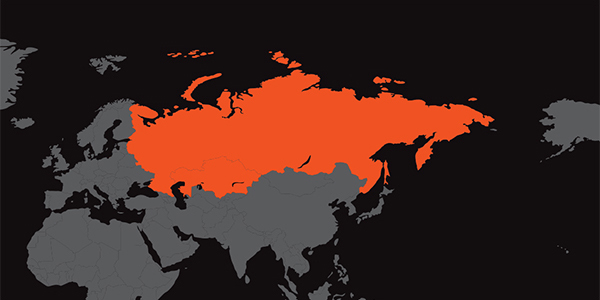





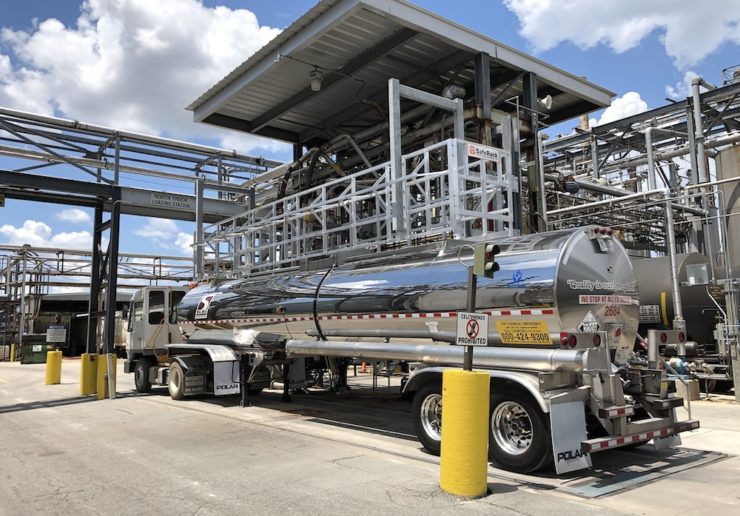
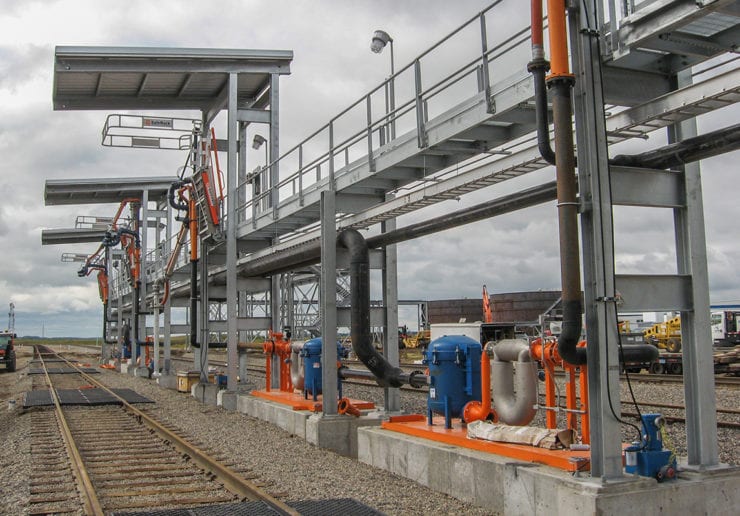
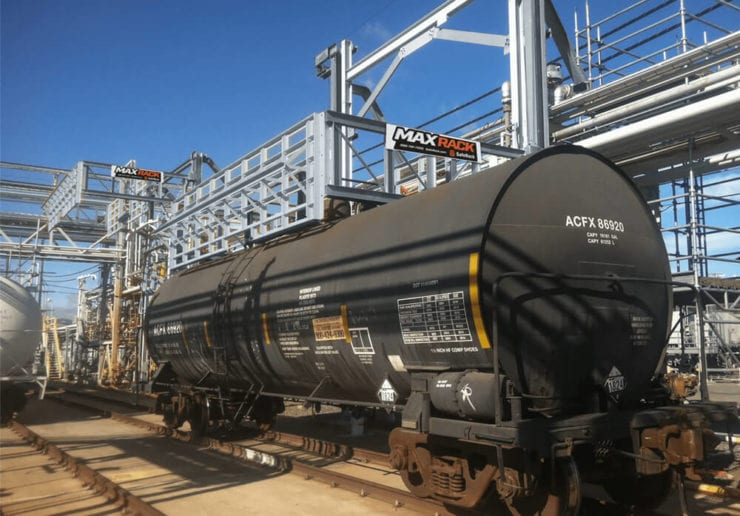

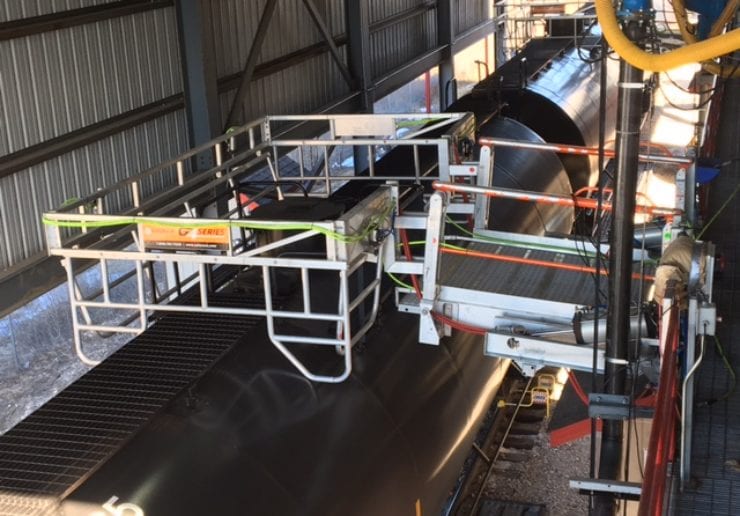

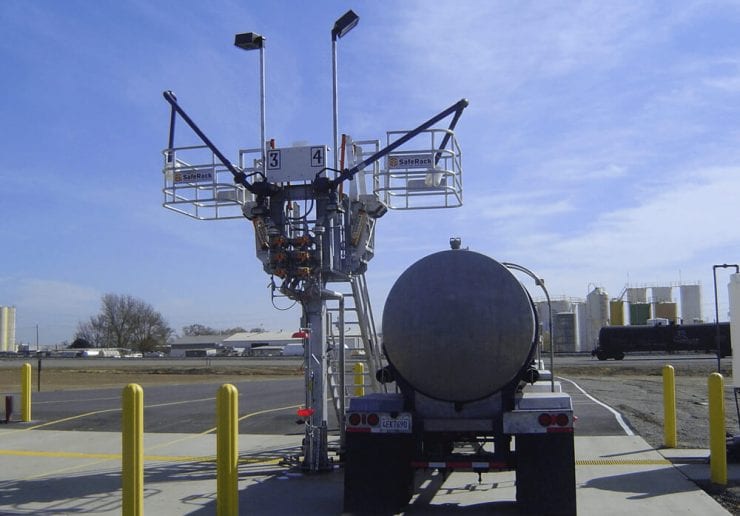
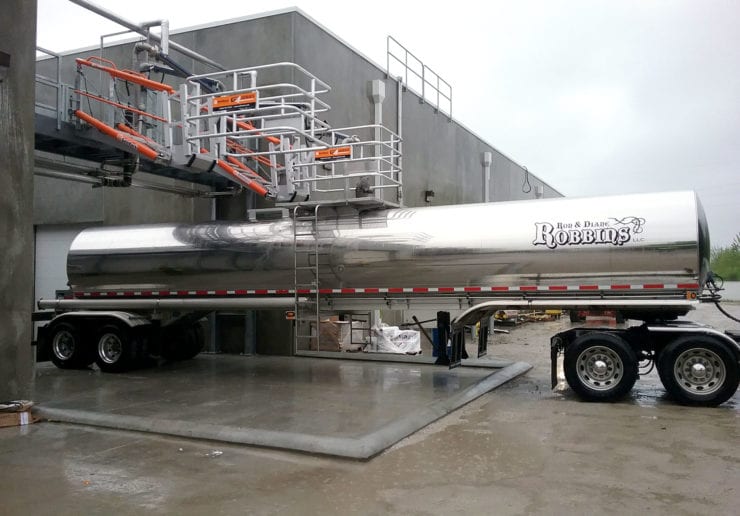
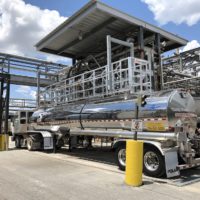
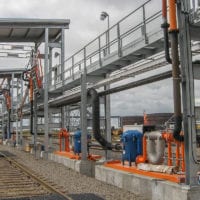
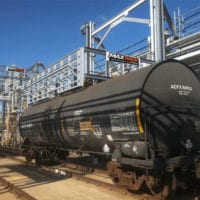
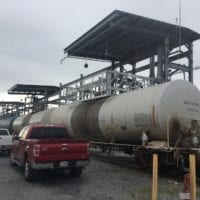
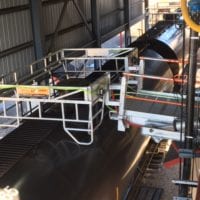

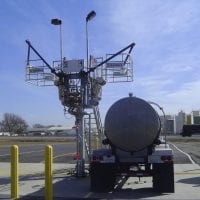


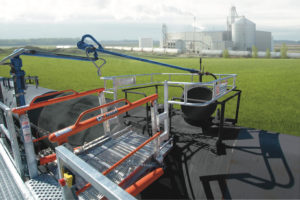
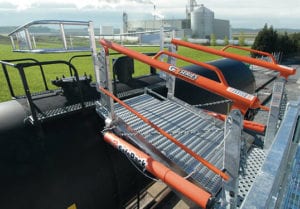
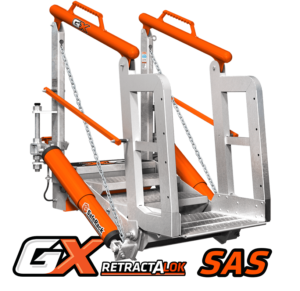
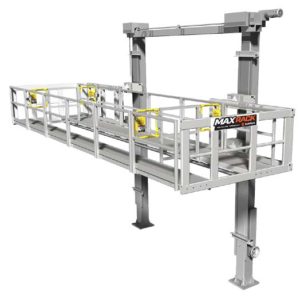 As an alternative to our two and four-rail safety cages, some customers prefer our MAXRack elevating safety cages. The ultimate fall prevention solution engineered to keep operators safe and productive. Designed for both trucks or railcars, and available in multiple cage lengths and widths. Safe, durable, and easy to use. MAXRack is built rock-solid with galvanized steel column supports and lifting arms (cages can be Aluminum, Galvanized, or Stainless Steel depending on application) Available in two power options – Pneumatic Air Drive and Electric Drive (Explosion and Non-Explosion Proof).
As an alternative to our two and four-rail safety cages, some customers prefer our MAXRack elevating safety cages. The ultimate fall prevention solution engineered to keep operators safe and productive. Designed for both trucks or railcars, and available in multiple cage lengths and widths. Safe, durable, and easy to use. MAXRack is built rock-solid with galvanized steel column supports and lifting arms (cages can be Aluminum, Galvanized, or Stainless Steel depending on application) Available in two power options – Pneumatic Air Drive and Electric Drive (Explosion and Non-Explosion Proof).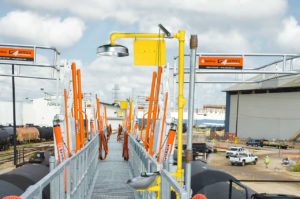
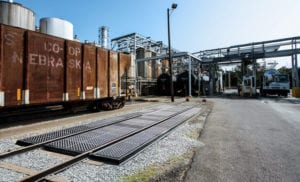
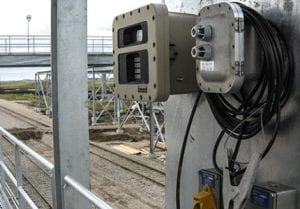
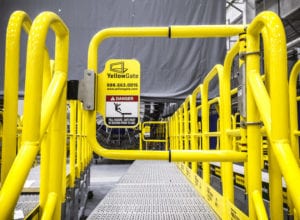
 YellowGate Safety Gates
YellowGate Safety Gates